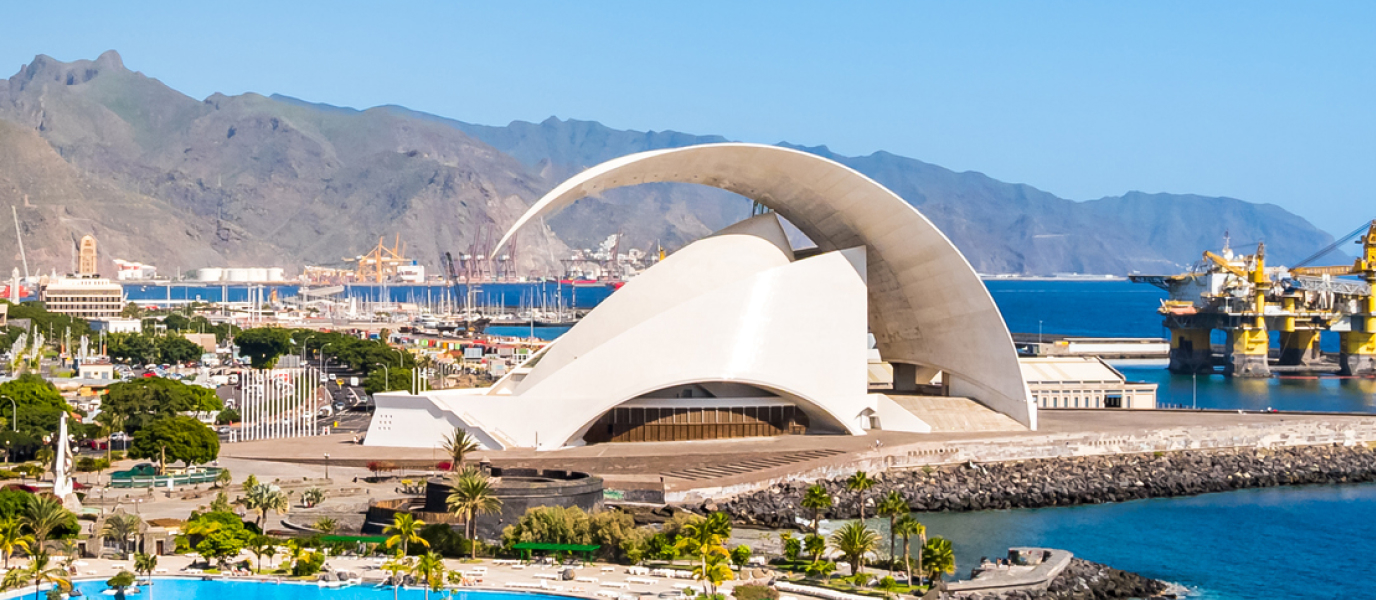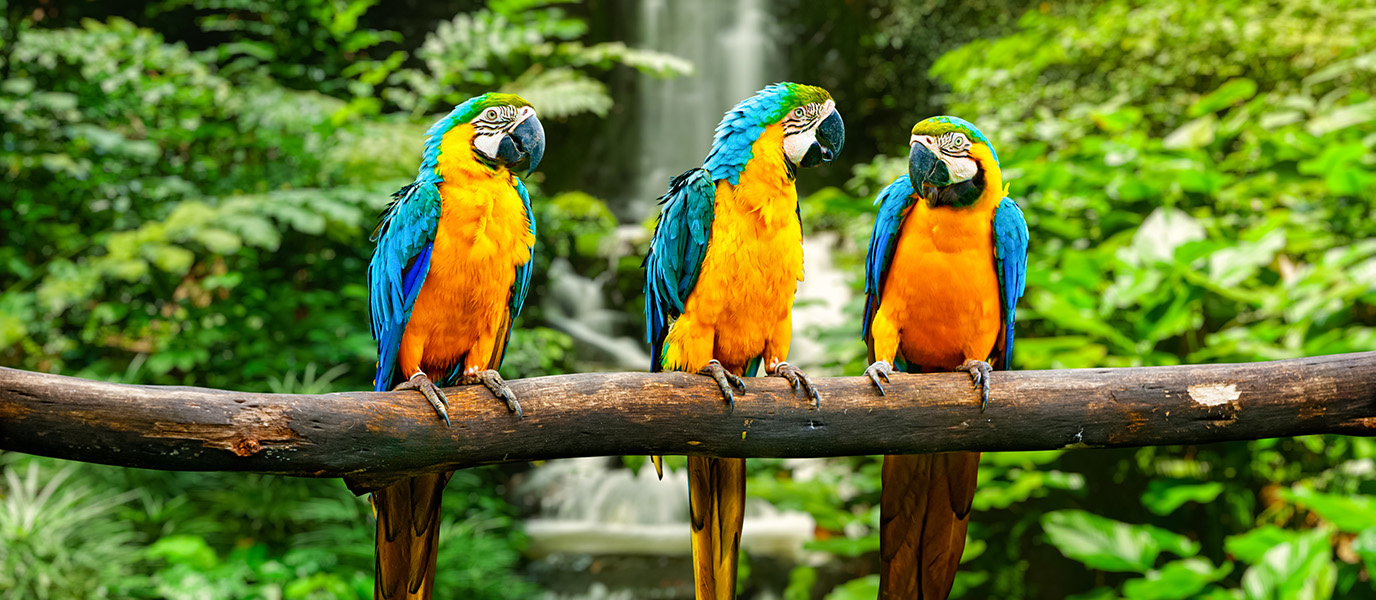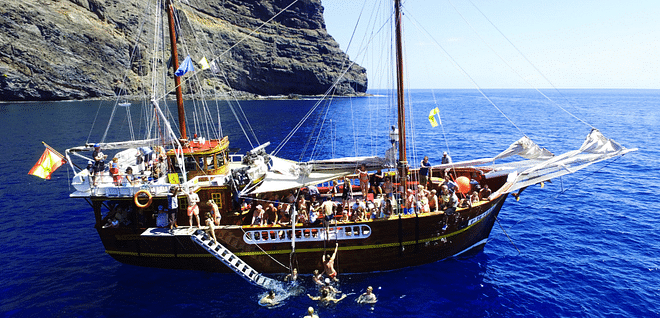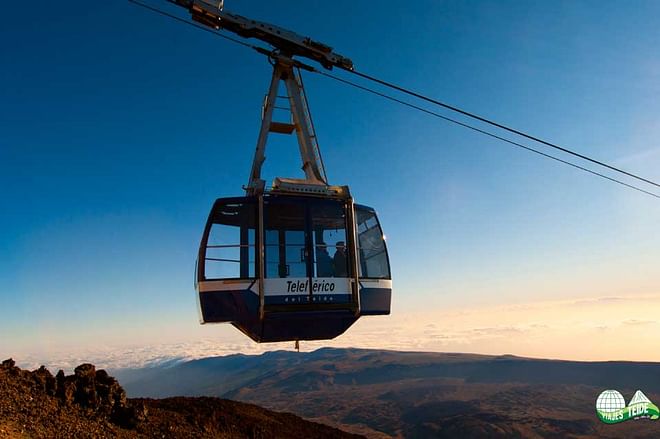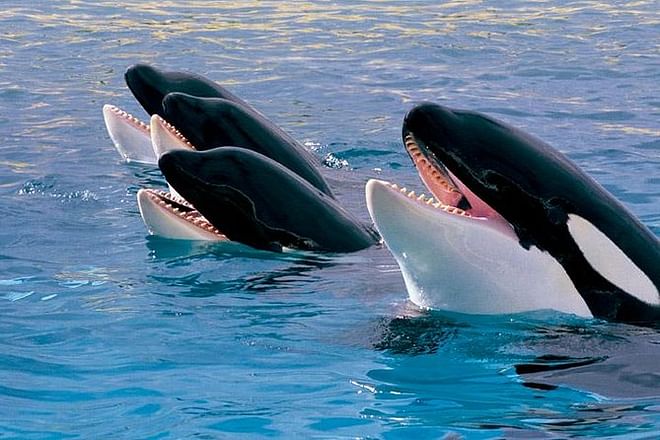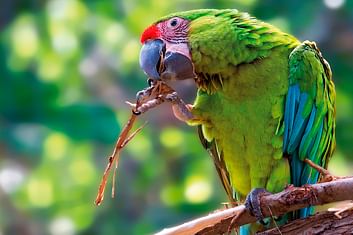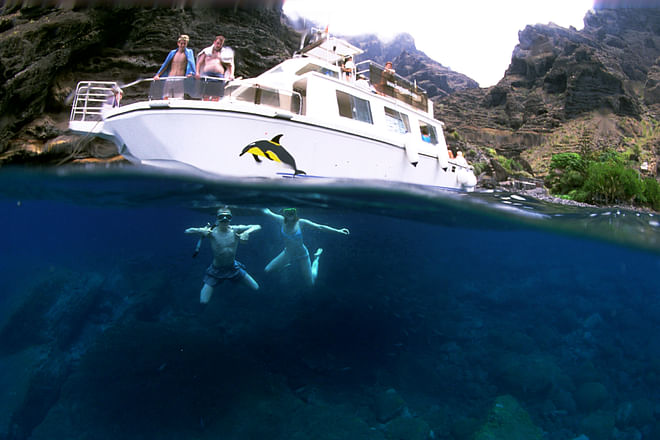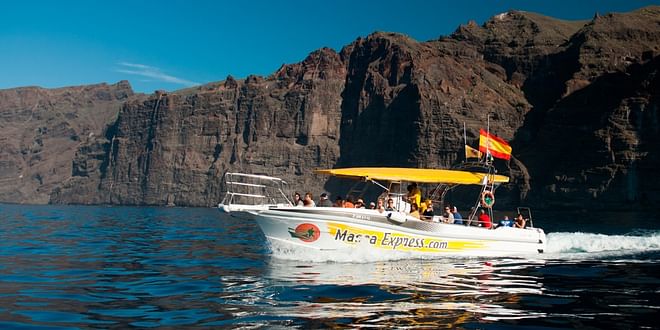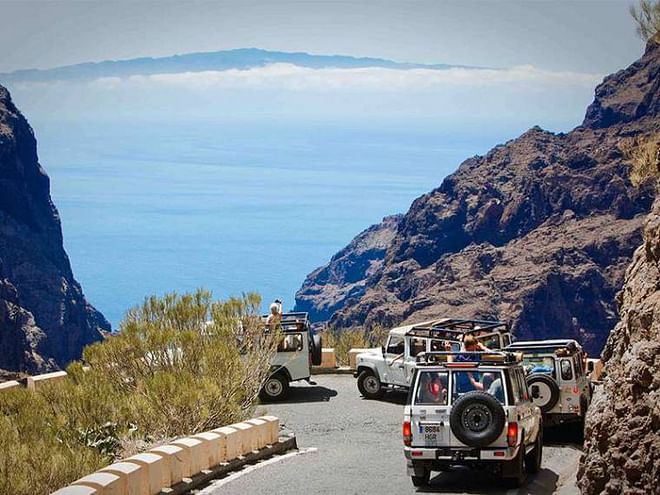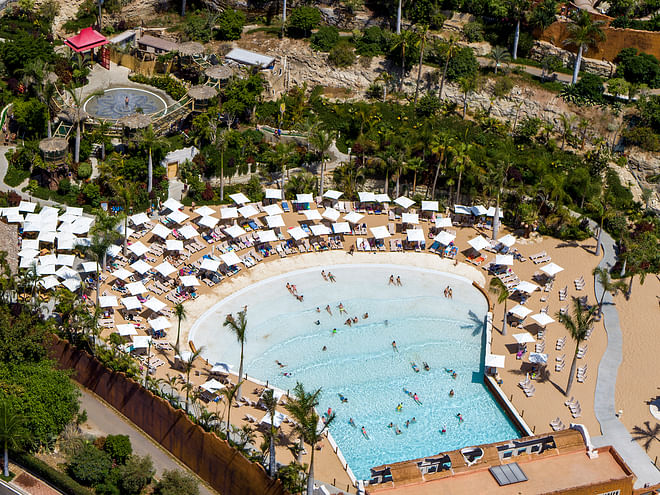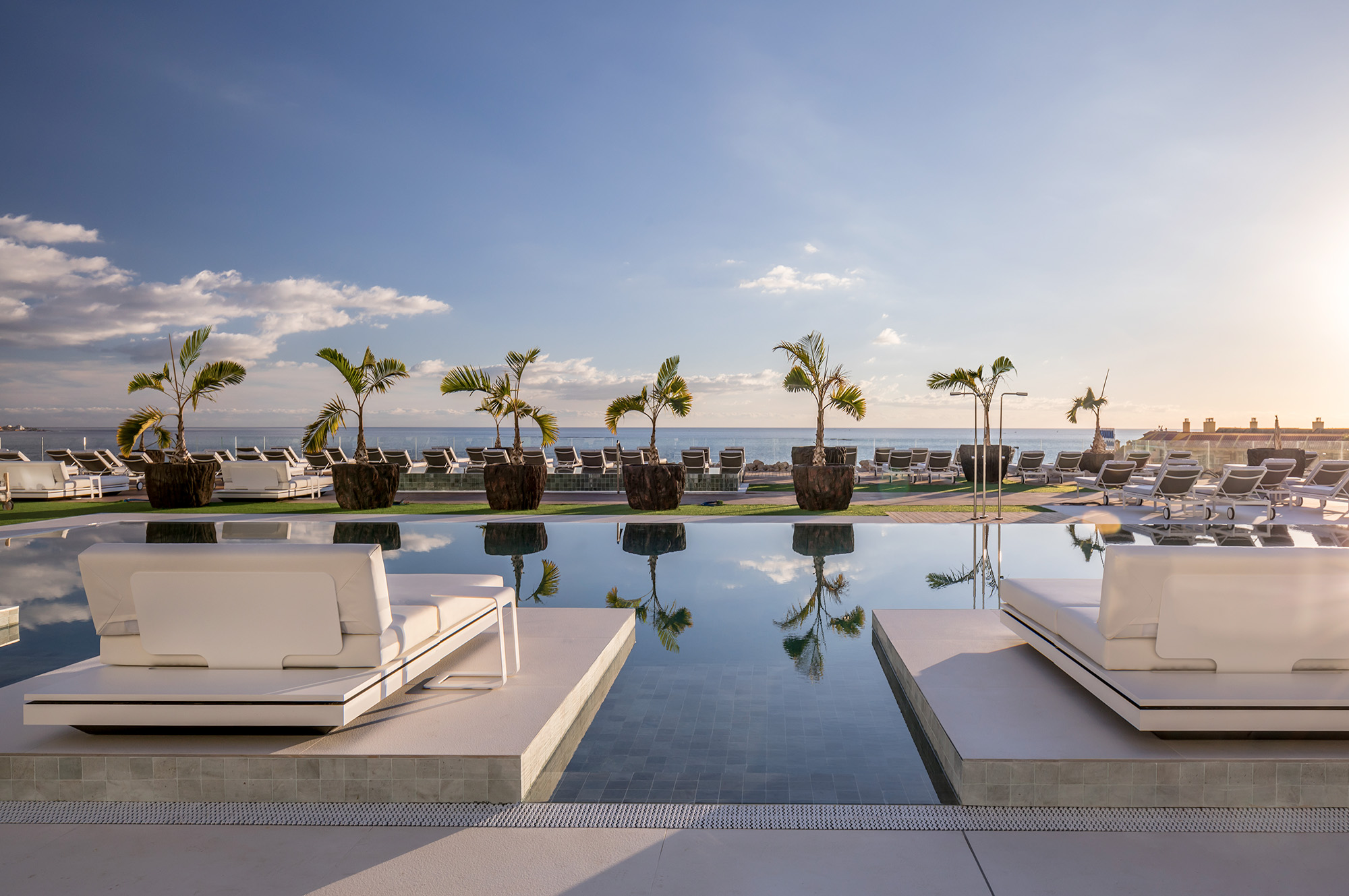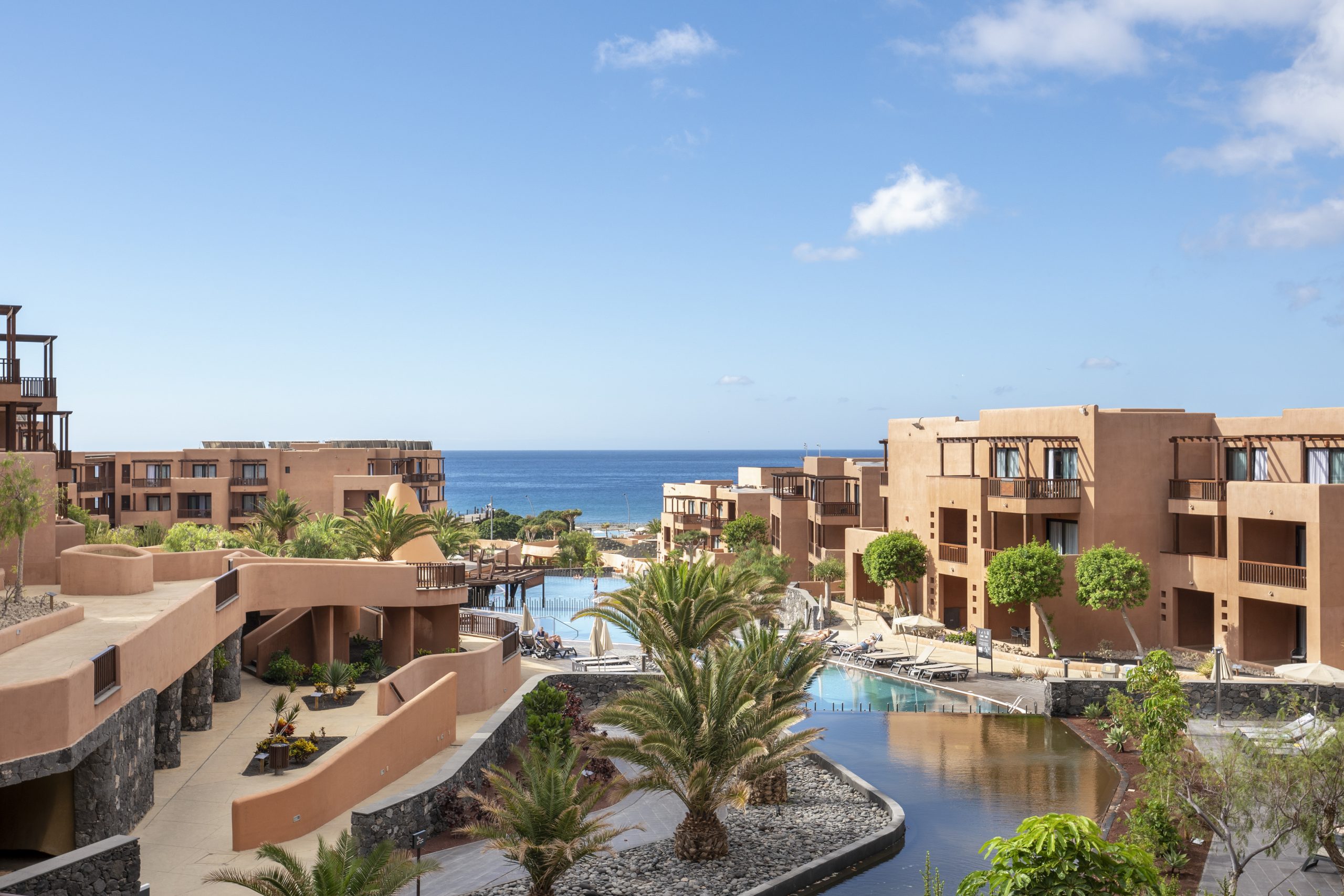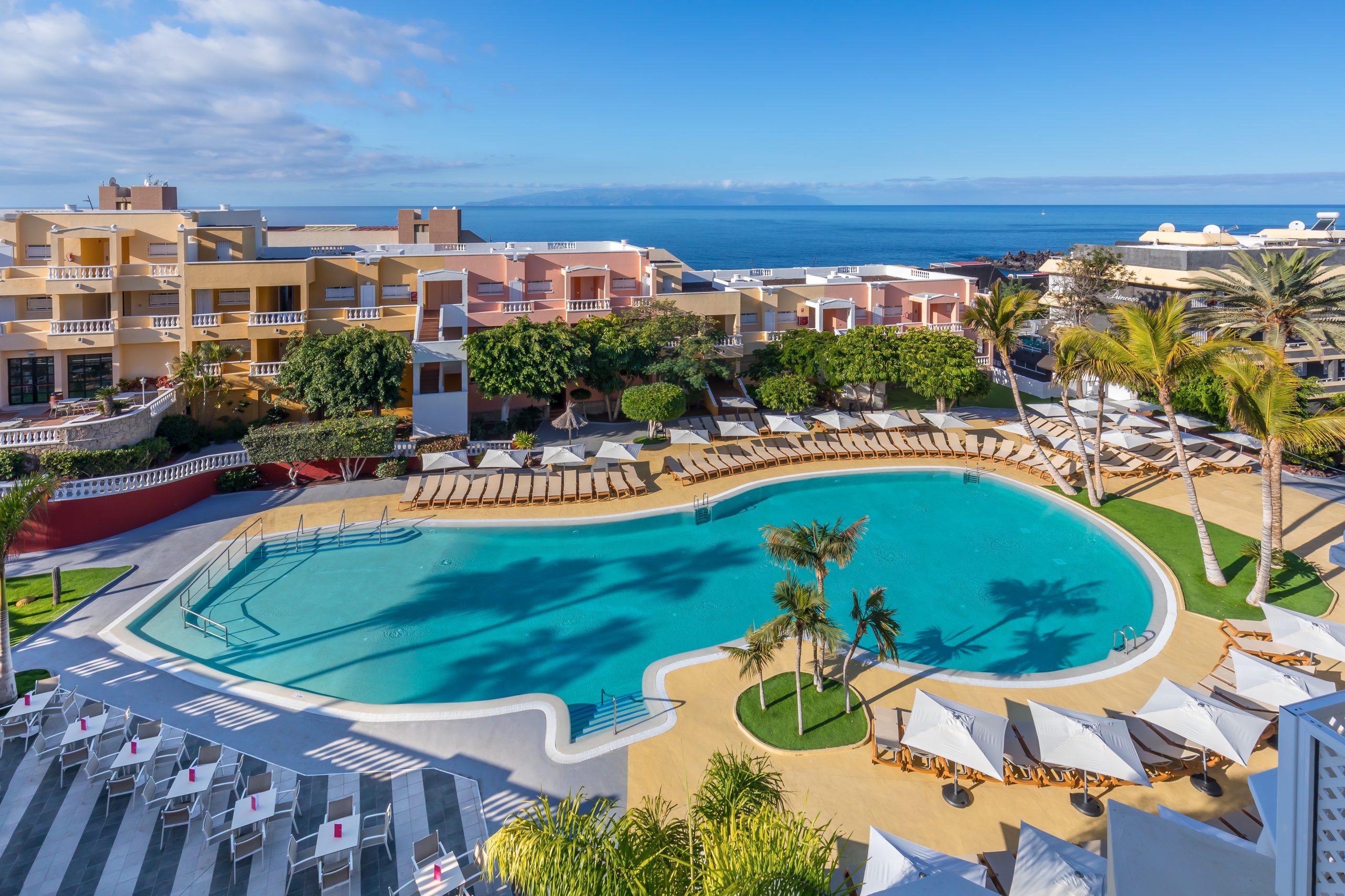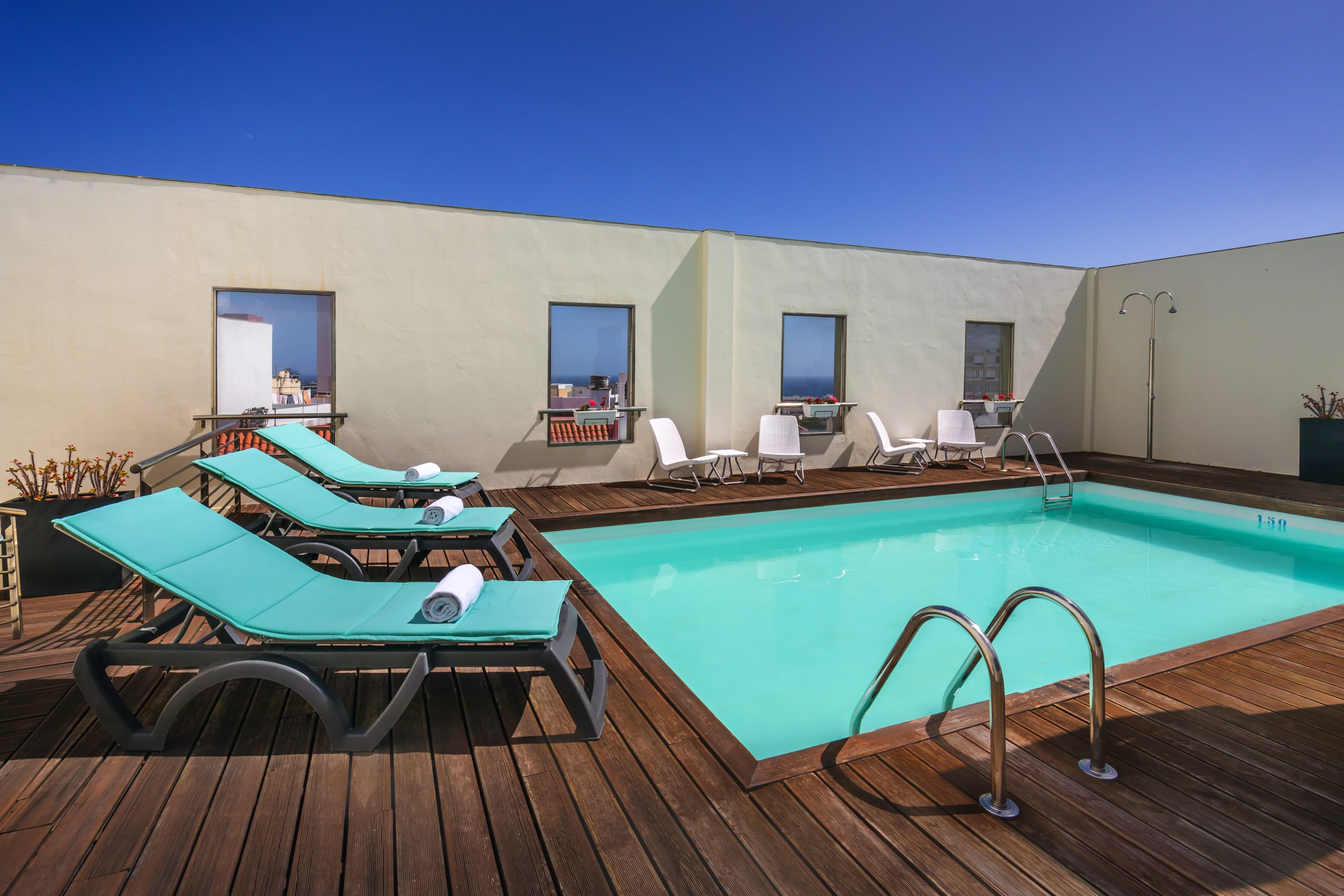Adeje, the fifth most-populated municipality in Tenerife and one of the main tourist resorts in the south, was once the court of the ancient Guanche kingdom before the island was colonised. It was the residence of the last Guanche king or mencey, Tinerfe ‘the Great’, before the island was divided up into nine menceyatos (kingdoms). The name Adeje itself is a Guanche word meaning ‘mountain range’. Who among those Guanches would have thought that the small mountain village would end up expanding towards the coast, in the mid-twentieth century, to become a tourist paradise? In addition to the magnificent beaches of Costa Adeje, where you can also enjoy a water park and whale watching tours, the town boasts interesting historical heritage and spectacular natural spaces such as the Barranco del Infierno ravine and the Caldera del Rey crater. Read on for a lowdown on what to see in Adeje.
Costa Adeje: 14 beaches, water parks, golf and scuba diving
With almost 300 days of sunshine a year and an average annual temperature of 24 degrees, Costa Adeje—situated some seven kilometres from the town—is a tourist paradise with 26 kilometres of coastline and up to 14 beaches and coves. Choose between wide and busy beaches with all imaginable services, such as Playa de Troya, Playa del Duque, Playa de Fañabé, Playa de Torviscas and Playa de La Pinta, or, opt for more isolated and secluded coves, such as Playa Los Morteros and Playa Las Salinas, among others.
In Costa Adeje you will find everything you need to relax and enjoy yourself, from five-star hotels and modern shopping centres to various entertainment and leisure options. If you like golf, be sure to visit the enormous Costa Adeje Golf Club, which boasts 18 holes with views of the ocean and a luxurious restaurant. Scuba diving is another of Adeje’s strong points: its beautiful coastline inhabited by over 500 species of fish and marine animals attracts hundreds of visitors who flock to its many dive centres. Another very popular activity among tourists is going to see the colonies of cetaceans that live in the waters. Just jump on board one of the boats or catamarans that go out on whale watching excursions for an unforgettable experience spotting pilot whales and dolphins just a few metres away from you.
Finally, in Siam Park get ready for a refreshing day of fun and adrenaline at the best water park in the world, according to TripAdvisor. Decorated in a Thai theme, the park holds various records, such as having the tallest artificial wave in the world and an innovative water roller coaster.
The Barranco del Infierno ravine and the Caldera del Rey crater
Adeje is situated in a beautiful landscape of great geological importance and almost 50% of its territory is composed of protected natural spaces. Among these, of particular note is the Barranco del Infierno Ravine Special Nature Reserve, where you can embark on a classic hike through a strange landscape of deep gorges, waterfalls and caves where the Guanches once lived.
Another one of the most visited natural spaces is the Caldera del Rey, a phreatomagmatic crater spanning 180 hectares that formed from the intense explosions that occurred when magma came into contact with the ocean. It is one of the three best examples of this type of volcanism in Tenerife. These days, bananas are cultivated within the crater and it is also home to two local families.
The town of Adeje: the Church of Santa Úrsula, Casa Fuerte and other places of interest
As previously mentioned, the town of Adeje has a long history that dates back to the times of Guanche hegemony prior to the island’s conquest. For that reason, the town has extensive historic and artistic heritage with various Assets of Cultural Interest that are well worth a visit. Among them is the beautiful Plaza de España, a traditional meeting point that boasts a large bell tower in honour of forbearers, and the church Iglesia de Santa Úrsula, which was built on the site of a primitive sixteenth-century hermitage that the first lord of Adeje, Pedro de Ponte y Vergara, ordered to be built.
The same nobleman is also responsible for the construction, in 1556, of Casa Fuerte [Fort House], a fortified residence on the edge of the village built to defend his properties from the frequent pirate attacks that Adeje suffered from. Although it was devoured by a fire in 1902, it’s worth a visit to view its ruins, located at a strategic point from where you can see the Barranco del Infierno ravine trail.
Be sure not to miss a visit to the rural hamlet of Taucho, a unique example of local architecture that has had to adapt to the steep terrain—it stands at an altitude of almost 900 metres—in order to plant crops.
Restaurants in Adeje: small culinary temples
Adeje’s cuisine uses a recurring series of ingredients from the region that have defined local gastronomy, which was very limited in its resources over centuries. At the Adeje Farmers’ Market you can buy local produce such as gofio (Canarian flour made from toasted grains), goat cheese, Canary Island bananas, honey, and a wide variety of volcanic wines directly from farmers and artisans.
At lunch, if you fancy sampling fish and seafood dishes, we recommend heading to the area of La Caleta, where there are various restaurants along the seaside promenade offering delicious traditional dishes, such as sancocho canario (a kind of stew based on salted fish, sweet potato and parsley), cazuela de pescado (fish stew) and vieja guisada con papas arrugadas (Mediterranean parrotfish served with ‘wrinkled’ potatoes).
Since Adeje is a mountain village, it also boasts hearty traditional meat dishes and stews. In the upper neighbourhoods—Taucho, La Quinta, Los Menores, etc.—you can find local restaurants serving specialities such as conejo al salmorejo (rabbit cooked with paprika and garlic), carne fiesta (meat marinated with different spices and white wine), ropa vieja (literally, ‘old clothes’; traditionally made using up leftovers—cooking stock, chick peas, potatoes, and shredded beef) and rancho canario (a hearty winter meat and pasta stew).





































































